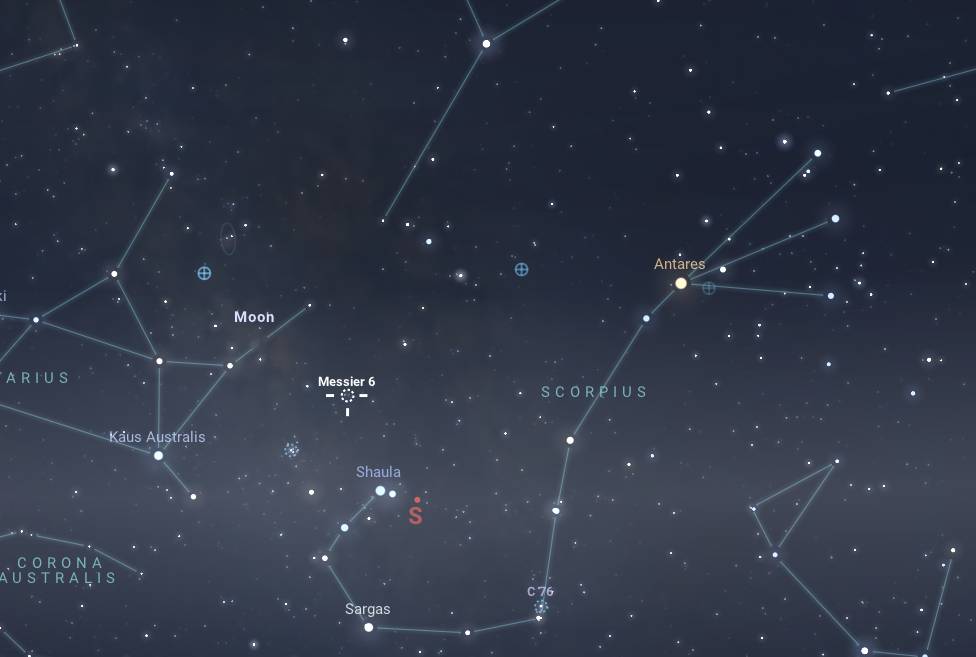Messier 6 (M6), also known as the Butterfly Cluster or NGC 6405, is a striking open star cluster situated in the constellation Scorpius, near the “stinger” stars, Shaula and Lesath. Located approximately 1,600 light-years from Earth, M6 is notable for its bright, young stars that together resemble the shape of a butterfly, giving it its popular nickname.
Historically, the cluster may have been known since ancient times due to its brightness. It was first officially catalogued by the Greek astronomer Claudius Ptolemy around 130 AD. However, it wasn’t until 1764 that Charles Messier added it to his catalogue of non-cometary celestial objects, marking it as the sixth object in his list.
Composition
Messier 6 is a typical open star cluster containing several hundred stars that are relatively young, with an estimated age of around 100 million years. These stars are loosely bound by gravity and spread across a region of about 12 light-years in diameter. The youth of M6’s stars is apparent from their colour: many of them are blue-white, signifying that they are hot, massive, and young compared to stars found in older globular clusters. The cluster’s brightest star is a K-type orange giant, which contrasts with the otherwise blue-white population and adds to the visual appeal of M6.
Observation
M6 is ideally observed from the Southern Hemisphere, where it appears high in the night sky during winter. The best viewing period is from June to August, when Scorpius dominates the sky. Although M6 is visible from both hemispheres, southern observers have the advantage of seeing it higher and with greater clarity. Northern Hemisphere observers can also enjoy viewing M6, although it appears lower on the horizon, which can make it more challenging to observe clearly.
With an apparent magnitude of around 4.2, M6 is visible to the naked eye under dark skies, where it appears as a hazy patch of light. This brightness makes it a rewarding target for amateur astronomers. Binoculars or a small telescope reveal its distinct butterfly shape and many individual stars, enhancing the observing experience.
Messier 6 remains an impressive and accessible object for stargazers, offering a splendid view of young, bright stars clustered in a picturesque formation that even novice astronomers can appreciate.




